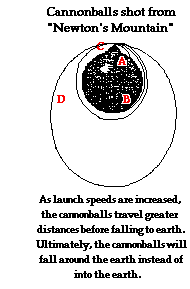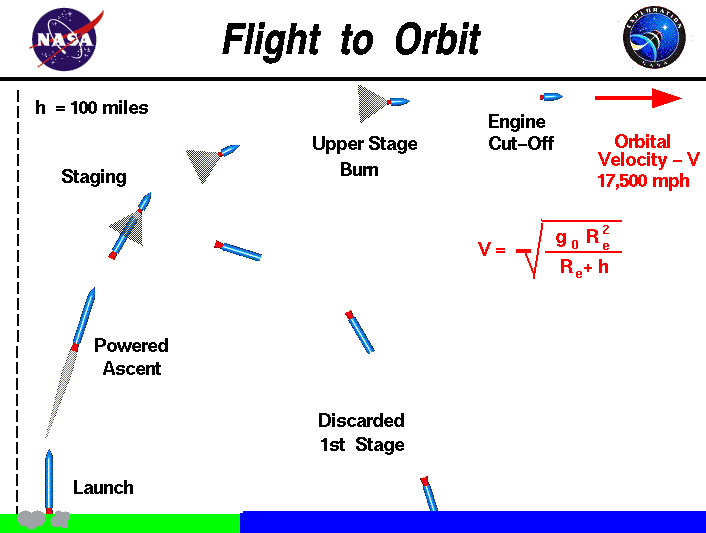LEO: All about Low Earth Orbits
Topic outline
-
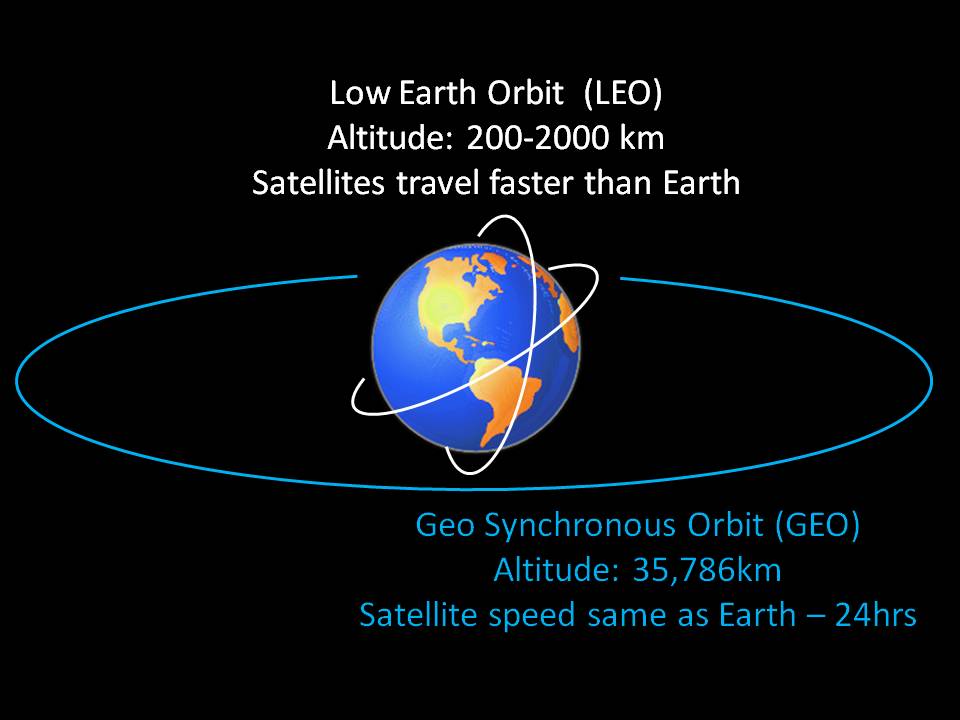 Low Earth Orbits
Low Earth OrbitsWritten by: Kathy Gustavson
Grade (Age) level: High School (ages 14-18), UniversityThis course is to help students focus on their efforts in the task of learning about Low earth orbits: characteristics, advantages and disadvantages.
Image courtesy of Ardusat: https://www.ardusat.com/about
Topic areas: Intro to projectiles, speed, period, and launching of LEOs. Examples of uses. Problems with space debris.
A LEO, low earth orbit, is defined by its altitude. -
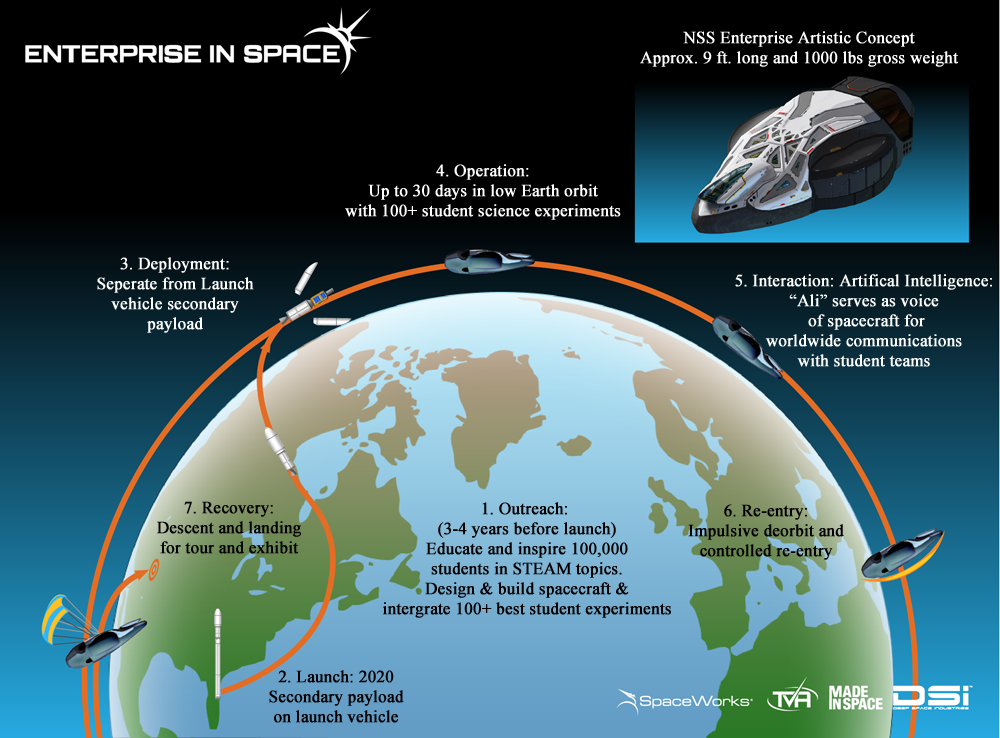 The mission of Enterprise In Space is to build, launch, operate, and later return to Earth an orbiter containing student experiments.
The mission of Enterprise In Space is to build, launch, operate, and later return to Earth an orbiter containing student experiments.
The orbit of the NSS Enterprise, the unmanned satellite that will be launching in 2020-2021 carrying 100+ student experiments (competition to get your experiment on board opens in 2018!), has an altitude between 160 km (99 miles) and 2,000 km (1, 200 miles). This orbit is called a Low Earth Orbit -a LEO. Any altitude lower than approximately 99 miles (160 km) will encounter rapid orbital decay, with the most significant effect being atmospheric drag, leading to eventual termination of the orbit, (yes, that means it crashes!).
Since 1972, all human explorations have been in low earth orbits (or were suborbital), with the exception of the Apollo program. The highest altitude for human spaceflight in LEO was Gemini 11, whose apogee (furthest distance from earth,) was 1, 374.1 kilometers (853.8 miles). The International Space Station (altitude about 250 miles) operates in LEO, as does the Hubble Space Telescope, and a big percentage of all other satellites.The EIS Academy has a project titled Satellites- Understanding How they Work! MS , which is a good introduction to satellite motion at the middle school level. Here, in this current project, you will further your understanding of satellites , both conceptually and mathematically.
The quiz, "What do you know about LEO orbits?", will assess what you already know about orbits.
-
In order to understand why a satellite simply does not fall to Earth, you need to understand some things about projectile motion,
The Physics Classroom is a great resource (http://www.physicsclassroom.com/), and is the source of the following:
Parabolic Motion of Projectiles
A projectile is an object upon which the only force is gravity. Gravity, being a downward force, causes a projectile to accelerate in the downward direction. The force of gravity could never alter the horizontal velocity of an object since perpendicular components of motion are independent of each other: A vertical force does not effect a horizontal speed. The result of a vertical force acting upon a horizontally moving object is to cause the object to deviate from its otherwise linear path, but does not change its speed. This is depicted in the animation below.

According to Newton's law of inertia, an object in motion in a horizontal direction would continue in its horizontal motion with the same horizontal speed and direction unless acted upon by an unbalanced horizontal force. The animation above shows a green sphere moving to the right at constant speed. The horizontal distance traveled in each second is a constant value. The red sphere undergoes a vertically accelerated motion which is typical of an object upon which only the force of gravity acts. If these two motions are combined - vertical free fall motion and constant horizontal motion - then the trajectory will be that of a parabola. An object which begins with an initial horizontal velocity and is acted upon only by the force of gravity will follow the path of the blue sphere. It will travel the same horizontal distance in each consecutive second but will fall vertically a greater distance in each consecutive second. The result is a parabolic path as shown in the animation above.
The most important thing to understand about projectile motion is the idea of the horizontal speed.
If you would like to understand more about projectile motion, this link will take you to the tutorial in the Physics Classroom:
http://www.physicsclassroom.com/Class/vectors/u3l2a.cfmHomework:
1. Use Journal 2a: Questions Concerning Projectile Motion, to answer the following questions about projectile motion:
a.) What is meant by "inertia"?
b.) Is there a force acting in the horizontal direction? What evidence is there for your answer?
c.) Is there a force acting in the vertical direction? What is your evidence?
d.) Describe the vertical and horizontal motion of the blue ball.
e.) In your own words, describe three different types of projectiles2. Use the discussion Forum below, "Projectiles", to post an image of what you think is a projectile. Discuss why you think it is a projectile.
Then, comment on someone else's image - are they correct in identifying the object as a true projectile?-
Forum
-
The above link is a one page summary of satellite motion.
Please read it and answer these questions in Journal 2b: Satellite Motion:
a.) What are the forces acting on a satellite?
b.) How would a satellite move in the absence of gravity?
c.) In what direction does gravity accelerate an object?
d.) What is the curvature of the earth?
e.) How far does an object fall in the first second?
f.) How fast horizontally must a satellite move to fall around the earth?
g.) What is the result if the satellite is given a lesser speed?
h.) What is the result if the satellite is given a greater speed?
i.) Is there an upper limit on the speed a satellite can be given and still orbit the earth? -
Journal
-
A satellite would need to have a sideways speed of about 8 km/s if it was right above the surface of the earth. The force of gravity lessens as you move further from the earth, and hence, the orbital velocity needed is lower - approximately 7.8 km/s for a stable LEO. How fast is this in miles per hour? Using the fact there are 1609 meters in one mile and 3600 seconds in one hour, we find 7.8 km/s is equal to 17,451.8 miles per hour!
For a circular orbit of 200 km (124 mi), the orbital speed is 7.79 km/s. and for 1500 km it is 7.12 km/s.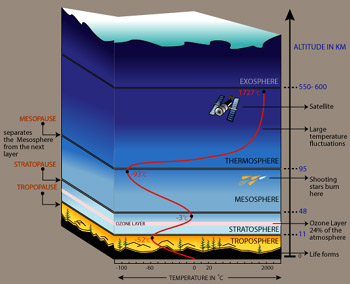 An object right above the surface of the earth would encounter atmospheric drag - in fact, anything below 160 km (99 mi) experiences very rapid orbital decay. Objects above 160 km in LEO do encounter some atmospheric drag from gases in the thermosphere or exosphere, depending on orbital altitude. This drag will degrade the orbit - that is, it will slow the object's horizontal speed. This decrease in speed would cause the object to get closer to the earth, eventually crashing into it. Therefore, the drag requires a slightly greater velocity to maintain a stable LEO.
An object right above the surface of the earth would encounter atmospheric drag - in fact, anything below 160 km (99 mi) experiences very rapid orbital decay. Objects above 160 km in LEO do encounter some atmospheric drag from gases in the thermosphere or exosphere, depending on orbital altitude. This drag will degrade the orbit - that is, it will slow the object's horizontal speed. This decrease in speed would cause the object to get closer to the earth, eventually crashing into it. Therefore, the drag requires a slightly greater velocity to maintain a stable LEO.
See "Layers of The Atmosphere - NOAA" below to learn more about the density of air in the different layers.The period of an orbit refers to the time it takes for one complete orbit.
-
Optional link to discover more details!
-
Journal
-
-
A low Earth orbit (LEO) is the simplest and cheapest way to place a satellite into orbit.
It is used for things that need to be visited, updated, or fixed, like the International Space Station and the Hubble Space Telescope. People can go into orbit, do experiments or fix things, and return in a relatively short period of time.
The image below is from Wikipedia. Take a look at it now, you will see it again and answer questions about it:
A perfectly scaled diagram showing the orbital altitudes of several significant satellites of earth. all planets and orbital distances are drawn to scale and the altitude data was collected from many Wikipedia articles and various other sites. Rrakanishu - Own work
Examples:
A. Earth Observation satellites and spy satellites, since they are not so far from the Earth, are able to see the surface in more detail. Their 90 minute orbit also allows the satellites to cover (traverse) more area.
B. Many communication satellites use LEO because it requires less energy to get into the orbit, and less powerful amplifiers for transmission of signals. A subset of LEO's are: ELEO, equatorial low earth orbits (an interesting, short article). In order to get continuous coverage over parts of the Earth, a network or constellation of satellites is use. Some also use Highly Elliptical Orbits - click on the link to learn more.Animation is from NASA's scientific visualization studio (Visualizations by Greg Shirah on February 26, 2015)
If you would like to find out anything about a satellite shown, click here.C. The International Space Station is about 400 km (250 mi) above the Earth in a LEO.
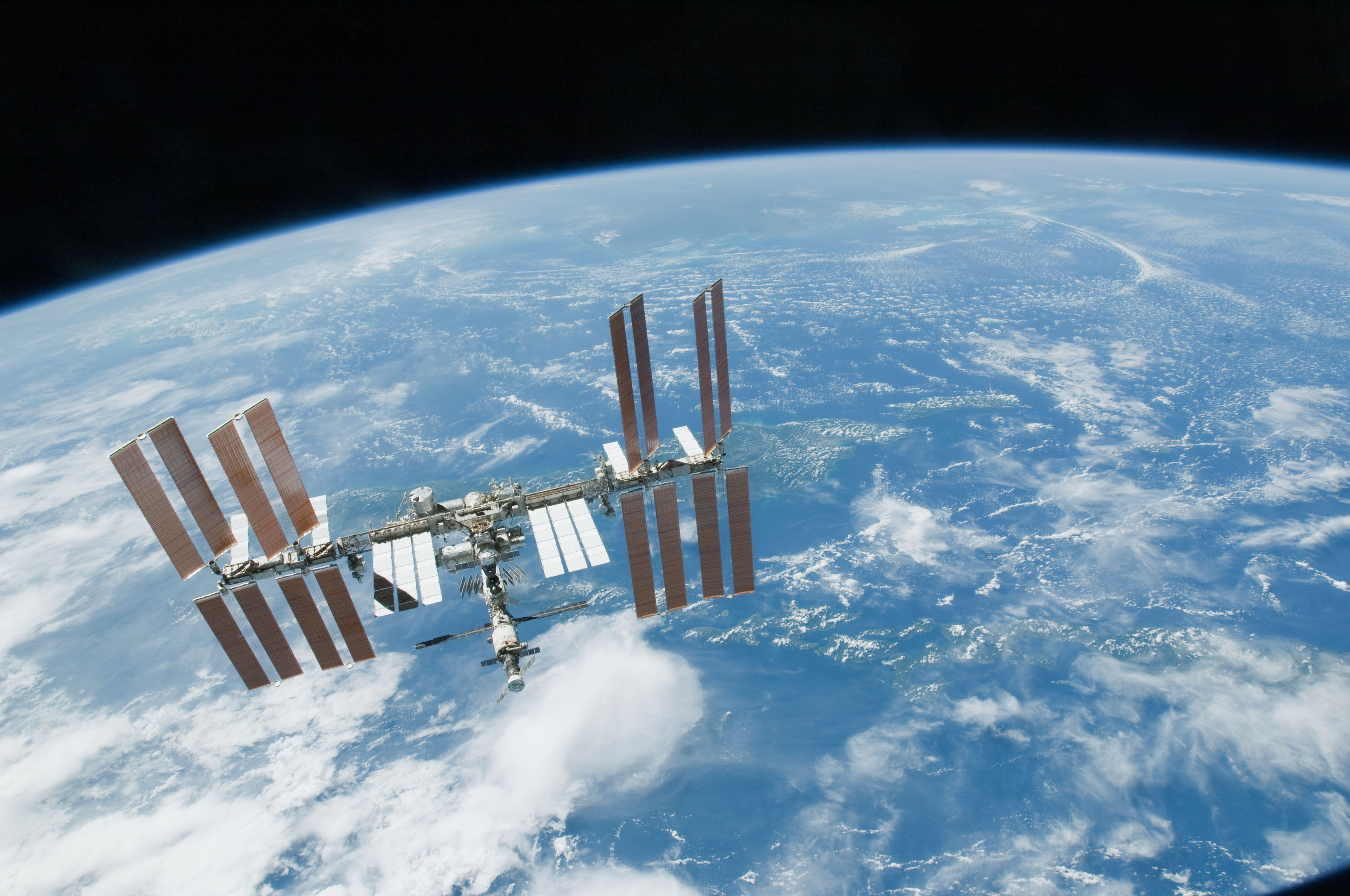
D. Hubble Space Telescope, launched in LEO in 1990, orbits at an altitude of of approximately 540 km (335 mi). Its period of revolution is 95.47 minutes. Being in LEO allows this telescope to be above the distortion of the atmosphere, yet in range of being serviced, although its last service mission was concluded in 2009. Orbital decay is expected to happen between 2030 and 2040. A new space telescope, the James Webb Space Telescope (JWST) is expected to launch in October of 2018. It will not orbit the earth, instead it will orbit the sun!
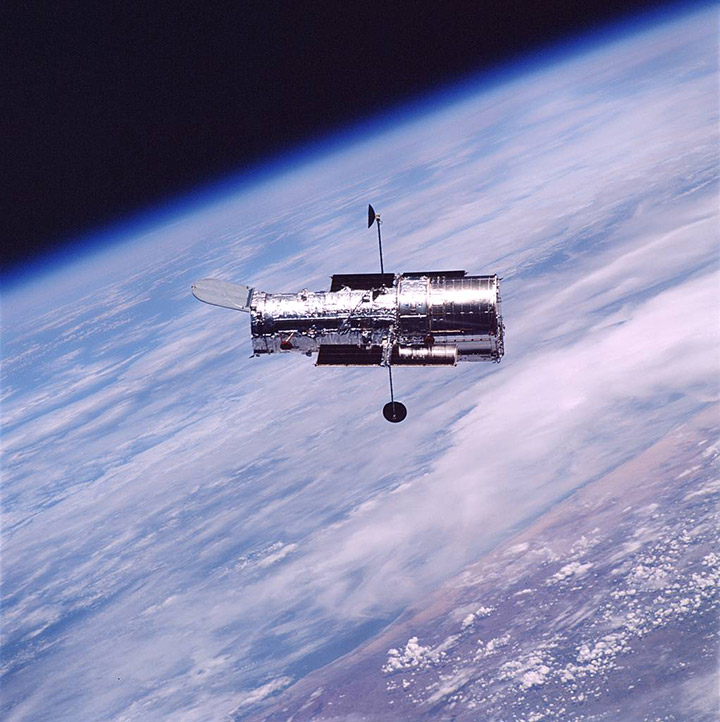
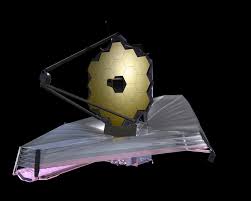
James Webb Telescope on the left, Hubble Space Telescope on the right, NASA images.
Now return to the Wikipedia diagram at the beginning of this section. Answer the following question in Journal 4: Questions about the Wikipedia diagram:
a.) State the names (and color code) of the three zones.
b.) Where are GPS satellites? What is their orbital time?
c.) Where are GEO satellites? Describe. -
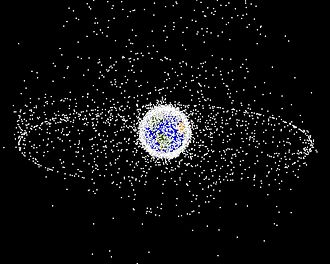 Low Earth Orbit has become congested with space debris. This is cause for a growing concern since collisions at orbital velocities can be dangerous. Collisions can produce even more space debris with a domino process called the Kessler syndrome (click to find out more) . NASA is currently tracking 8,500 objects larger than 10 cm in LEO, but there is probably a lot more. It is estimated there are about 600,000 pieces between 1 cm and 10 cm.
Low Earth Orbit has become congested with space debris. This is cause for a growing concern since collisions at orbital velocities can be dangerous. Collisions can produce even more space debris with a domino process called the Kessler syndrome (click to find out more) . NASA is currently tracking 8,500 objects larger than 10 cm in LEO, but there is probably a lot more. It is estimated there are about 600,000 pieces between 1 cm and 10 cm.
Space debris is becoming an international problem as more and more countries are launching satellites. Soon, launches into any orbit will be at a great risk of damage as the debris cloud gets bigger.
The NASA image on the left shows debris in all orbits, not just LEO. The higher orbits are more difficult to clear since there is much less drag. LEO has an advantage in that the slight atmospheric drag helps de-orbit some of the space junk bring slowing it down and therefore crashing into the earth (and hopefully into the ocean!)This topic has several links listed below for you to look at and read, including a Cybrary link on the mitigation of orbital space debris (ODSM ECE).
Answer the following questions (they refer to all the links) in Journal 5: Space Debris:a. What is the 25-year rule?
b. What does IADC stand for?
c. Comment on the video.
d. What does 'GOLD' stand for? Describe it.
e. What is the student competition about?Please add to the discussion at the end of the cybrary.
-
Journal
-
CybraryDiscuss
Orbital Debris Space Mitigation Center for Excellence Contest.
After selecting the ODSM link and participating in the discussion, click your browser's back button to return to LEO.
-
Read this short article to give you an idea of international thought on space debris in 2013.
-
An interesting idea for de-orbiting satellites.
-
This Astronomy Picture of the Day from Feb 18, 2009, describes a collision and result between two satellites.
-
-
Space law is currently under the United Nations. The Outer Space Treaty is the mostly widely adopted (103 nations). The UN developed a "Committee on the Peaceful Uses of Outer Space" (COPUOS) in 1959. This has resulted in five treaties, with the Outer Space Treaty being the most successful.
As private companies become more involved in launching and maintaining satellites, there has been a call in the United Nations for more laws or treaties to oversee the likely rapid expansion. As more and more use Low Earth Orbit, rules and regulations need to be understood and reinforced so space debris does not make the journey to any orbit more dangerous.International Astronautical Congress (IAC) (source: Wikipedia)
Every year, the International Astronautical Federation together with the International Academy of Astronautics and the International Institute of Space Law (IISL), holds the International Astronautical Congress (IAC) which is hosted by one of the national society members of the IAF. They are an annual meeting of the actors in the discipline of space, and are generally held in late September or early October. They consist of plenary sessions, lectures and meetings. The IAC is attended by the agency heads and senior executives of the world's space agencies.
Using Journal 6: Cost? Laws?, Answer the following questions:
1. Where was the last IAC meeting?
2. Where will it be next year?
3. What kind of things did they discuss/ (hint - find a program)
4. Click on one of the links in the Wikipedia source above to find out more about either the Federation, Academy, or Institute. Write a few sentences describing it.
5. There is some material available online about the cost of launching payloads. Find out a few numbers and list them in this journal.-
Journal
-
-
This satellite map from ESRI is a fun and educational tool. Your final project is to first play with the controls to see what the site offers. Then either pick a satellite and find out what you can about it, including its orbit, purpose, etc. Or you can pick any country except the US or Russia and find out how many satellites they have launched, what type, where are they, etc.
Take a screen shot of the satellite(s) you are discussing and post it on the padlet listed below. Also post at least two paragraphs describing your findings on the satellite(s).-
This is tool that lets you see where where and who and what the satellites are.
Answer these questions in Journal 8: Satellites
-
-
Please let us know your thoughts about this course by using the Reflection Forum for LEO below
- What was your favorite activity?
- What was the most important part of the course for you?
- Are there any areas that need improvement?
- How was the length of the course?
- Any additional comments
After you use the discussion forum, please answer the BRIEF Course Survey for LEO questions in the link below.
Thank You!!!
-
Forum
-
Brief!

